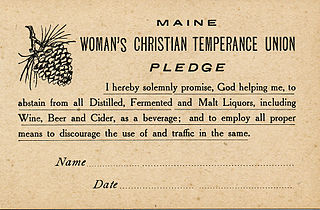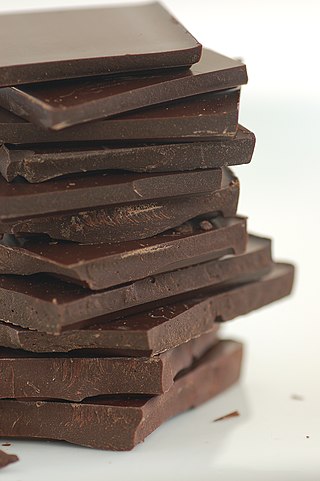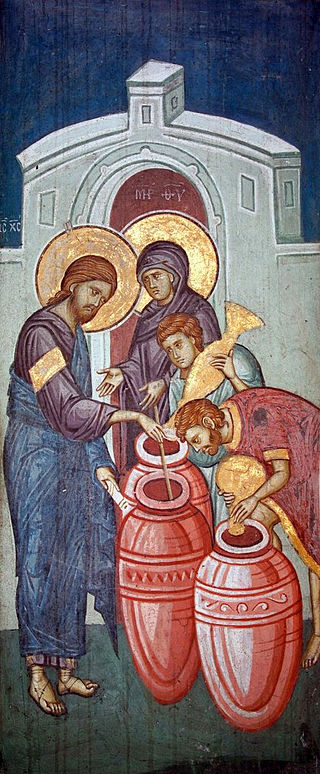
Warm milk is milk that has been heated above room temperature. It is commonly used as a nightcap for children and people who abstain from alcohol. [1] Its effectiveness as such is disputed. [2]

Warm milk is milk that has been heated above room temperature. It is commonly used as a nightcap for children and people who abstain from alcohol. [1] Its effectiveness as such is disputed. [2]
Warm milk is commonly touted as a sleep aid for those who do not drink alcohol, such as children and those abstaining for religious reasons. Many people do not like the taste compared to cold milk. It is common for these people to add honey or vanilla, though vanilla extract contains about 45% alcohol. The reason for its recommendation is that it contains tryptophan, which the body uses to make melatonin, and calcium. [1] However, tryptophan does not cross the brain-blood barrier without carbohydrates, which is recommended not to eat before bed. [1] Some experts say that warm milk does not actually make the drinker sleepy, it only helps them relax. [2]

A drink or beverage is a liquid intended for human consumption. In addition to their basic function of satisfying thirst, drinks play important roles in human culture. Common types of drinks include plain drinking water, milk, juice, smoothies and soft drinks. Traditionally warm beverages include coffee, tea, and hot chocolate. Caffeinated drinks that contain the stimulant caffeine have a long history.

Abstinence pledges are commitments made by people, often though not always teenagers and young adults, to practice abstinence, usually in the case of practicing teetotalism with respect to abstaining from alcohol and other drugs, or chastity, with respect to abstaining from sexual intercourse until marriage; in the case of sexual abstinence, they are sometimes also known as purity pledges or virginity pledges. They are most common in the United States among Catholic and Evangelical Christian denominations, while others are nonsectarian.

A milkshake is a sweet beverage made by blending milk, ice cream, and flavorings or sweeteners such as butterscotch, caramel sauce, chocolate syrup, fruit syrup, or whole fruit, nuts, or seeds into a thick, sweet, cold mixture. It may also be made using a base made from non-dairy products, including plant milks such as almond milk, coconut milk, or soy milk.

Hot chocolate, also known as hot cocoa or drinking chocolate, is a heated drink consisting of shaved or melted chocolate or cocoa powder, heated milk or water, and usually a sweetener. It is often garnished with whipped cream or marshmallows. Hot chocolate made with melted chocolate is sometimes called drinking chocolate, characterized by less sweetness and a thicker consistency.

Benadryl is a brand of various antihistamine medications used to stop allergies, whose content varies in different countries, but which includes some combination of diphenhydramine, acrivastine, and/or cetirizine.

A chocoholic is a person who craves or compulsively consumes chocolate. The word "chocoholic" was first used in 1968, according to Merriam-Webster. It is a portmanteau of "chocolate" and "alcoholic". The term is used loosely or humorously to describe a person who is inordinately fond of chocolate; however, there is medical evidence to support the existence of actual addiction to chocolate. Psychoactive constituents of chocolate that trigger a ‘feel-good’ reaction for the consumer include tryptophan and phenylethylamine, which may contribute to cravings and addiction-like responses, particularly in people with specific genetic alleles. The quantity of sugars used in chocolate confections also impacts the psychoactive effects of chocolate.

Eggnog, historically also known as a milk punch or an egg milk punch when alcoholic beverages are added, is a rich, chilled, sweetened, dairy-based beverage. It is traditionally made with milk, cream, sugar, egg yolks, and whipped egg whites. A distilled spirit such as brandy, rum, whisky or bourbon is often a key ingredient.

Breast milk or mother's milk is milk produced by mammary glands located in the breast of a human female. Breast milk is the primary source of nutrition for newborns, containing fat, protein, carbohydrates and variable minerals and vitamins. Breast milk also contains substances that help protect an infant against infection and inflammation, whilst also contributing to healthy development of the immune system and gut microbiome.
In Islam, fasting is the practice of abstaining, usually from food, drink, smoking, sexual activity and anything which substitutes food and drink. During the holy month of Ramadan, sawm is observed between dawn and nightfall when the adhan of the Maghrib prayer is sounded. Ramadan is the ninth month of the Muslim lunar calendar and fasting is a requirement for Muslims as it is the fourth of the five pillars of Islam.
Alcohol education is the practice of disseminating information about the effects of alcohol on health, as well as society and the family unit. It was introduced into the public schools by temperance organizations such as the Woman's Christian Temperance Union in the late 19th century. Initially, alcohol education focused on how the consumption of alcoholic beverages affected society, as well as the family unit. In the 1930s, this came to also incorporate education pertaining to alcohol's effects on health. For example, even light and moderate alcohol consumption increases cancer risk in individuals. Organizations such as the National Institute on Alcohol Abuse and Alcoholism in the United States were founded to promulgate alcohol education alongside those of the temperance movement, such as the American Council on Alcohol Problems.
Alcohol has a number of effects on health. Short-term effects of alcohol consumption include intoxication and dehydration. Long-term effects of alcohol include changes in the metabolism of the liver and brain, several types of cancer and alcohol use disorder. Alcohol intoxication affects the brain, causing slurred speech, clumsiness, and delayed reflexes. Alcohol consumption can cause hypoglycemia in diabetics on certain medications, such as insulin or sulfonylurea, by blocking gluconeogenesis. There is an increased risk of developing an alcohol use disorder for teenagers while their brain is still developing. Adolescents who drink have a higher probability of injury including death.
The recommended maximum intake of the drug alcohol varies from recommendations to be alcohol-free to daily or weekly guidelines provided by health agencies. These recommendations concerning maximum intake are distinct from any legal restrictions, for example drunk driving laws by country.

Christian views on alcohol are varied. Throughout the first 1,800 years of Church history, Christians generally consumed alcoholic beverages as a common part of everyday life and used "the fruit of the vine" in their central rite—the Eucharist or Lord's Supper. They held that both the Bible and Christian tradition taught that alcohol is a gift from God that makes life more joyous, but that over-indulgence leading to drunkenness is sinful. However, the alcoholic content of ancient alcoholic beverages was significantly lower than that of modern alcoholic beverages. The low alcoholic content was due to the limitations of fermentation and nonexistence of distillation methods in the ancient world. Rabbinic teachers wrote acceptance criteria on consumability of ancient alcoholic beverages after significant dilution with water, but prohibited undiluted wine.
Caffeine-induced sleep disorder is a psychiatric disorder that results from overconsumption of the stimulant caffeine. Caffeine is one of the most widely consumed psychoactive drugs: almost 90% of Americans in a survey consume some type of caffeine each day. "When caffeine is consumed immediately before bedtime or .... throughout the day, sleep onset may be delayed, total sleep time reduced, normal stages of sleep altered, and the quality of sleep decreased." Caffeine reduces slow-wave sleep in the early part of the sleep cycle and can reduce rapid eye movement sleep later in the cycle. Caffeine increases episodes of wakefulness, and high doses in the late evening can increase sleep onset latency. In elderly people, there is an association between use of medication containing caffeine and difficulty in falling asleep.
The impact of alcohol on aging is multifaceted. Evidence shows that alcoholism or chronic alcohol consumption can cause both accelerated (or premature) aging – in which symptoms of aging appear earlier than normal – and exaggerated aging, in which the symptoms appear at the appropriate time but in a more exaggerated form. The effects of alcohol use disorder on the aging process include hypertension, cardiac dysrhythmia, cancers, gastrointestinal disorders, neurocognitive deficits, bone loss, and emotional disturbances especially depression. On the other hand, research also shows that drinking moderate amounts of alcohol may protect healthy adults from developing coronary heart disease. The American Heart Association cautions people not to start drinking, if you are not already drinking.

A nightcap is a drink taken shortly before bedtime. For example, a small alcoholic drink or glass of warm milk can supposedly promote a good night's sleep.

Abstinence is a self-enforced restraint from indulging in bodily activities that are widely experienced as giving pleasure. Most frequently, the term refers to sexual abstinence, but it can also mean abstinence from alcohol, drugs, food, etc.
Sleep induction is the deliberate effort to bring on sleep by various techniques or medicinal means, is practiced to lengthen periods of sleep, increase the effectiveness of sleep, and to reduce or prevent insomnia.

Iranian traditional medicine (ITM), also known as Persian traditional medicine, is one of the most ancient forms of traditional medicine.

Sleep deprivation - the condition of not having enough sleep - is a common health issue for students in higher education. This issue has several underlying and negative consequences, but there are a few helpful improvements that students can make to reduce its frequency and severity.